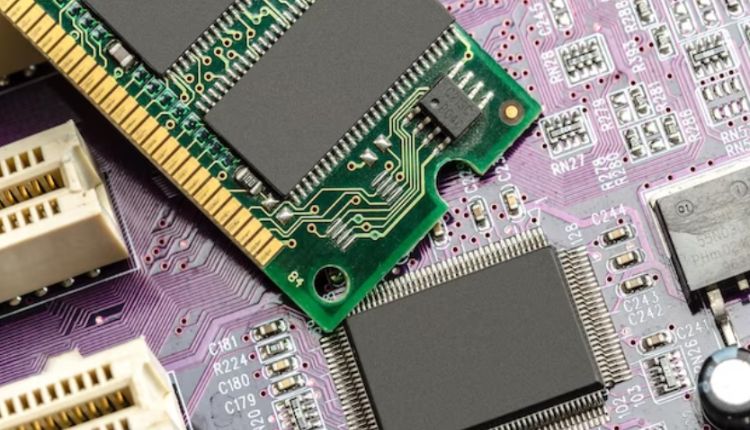In the fast-paced digital era, wireless communication has become an integral part of our daily lives. From smartphones to smart home devices, the demand for seamless connectivity continues to grow. Behind this revolution lies the unsung hero: Wireless and Radio Frequency (RF) Integrated Circuits (ICs). These tiny marvels of technology play a crucial role in enabling the wireless connectivity that empowers our modern world.
The Essence of Wireless Connectivity
Wireless connectivity is the backbone of the modern digital landscape. It’s what allows us to stream music, make video calls, and control smart devices without being tethered by physical cables. At the heart of this wholesale electronic parts distributor wireless ecosystem are RF Integrated Circuits, the unsung heroes that facilitate the communication between devices.
What Are Wireless & RF Integrated Circuits?
Wireless and RF Integrated Circuits are miniature electronic circuits that integrate various functions related to radio frequency communication. These functions include signal processing, modulation, demodulation, and amplification, all packed into a single chip. The primary goal is to ensure efficient and reliable communication between devices without the need for physical connections.
Advantages of Wireless & RF Integrated Circuits
- Miniaturization: RF Integrated Circuits enable the miniaturization of devices. Think about the evolution of mobile phones – from large, clunky devices to sleek, pocket-sized smartphones. This miniaturization is possible due to the compact nature of these integrated circuits.
- Energy Efficiency: These circuits are designed to be energy-efficient, ensuring prolonged battery life for wireless devices. The optimization of power consumption is vital, especially for portable devices that rely on batteries.
- Versatility: RF Integrated Circuits are versatile and can be adapted for various applications. They play a crucial role not only in consumer electronics but also in industrial applications, healthcare, and communication infrastructure.
Evolution of Wireless Communication
- First Generation (1G): The initial step towards wireless communication, 1G, introduced analog voice transmission. However, it lacked the security and efficiency that we expect today.
- Second Generation (2G): The advent of 2G brought digital signals, offering improved voice quality and data services. This era marked the transition from analog to digital communication.
- Third Generation (3G): 3G brought faster data transfer speeds, paving the way for mobile internet and multimedia services. It was a significant leap in terms of connectivity.
- Fourth Generation (4G): 4G revolutionized wireless communication with even faster data transfer rates, enabling high-definition video streaming and better support for mobile applications.
- Fifth Generation (5G): The current frontier in wireless communication, 5G promises ultra-fast data speeds, low latency, and massive device connectivity. RF Integrated Circuits are at the forefront of enabling these advanced capabilities.
Applications of Wireless & RF Integrated Circuits
- Mobile Communication: RF Integrated Circuits are the backbone of mobile communication, enabling smartphones to connect to cellular networks seamlessly.
- Internet of Things (IoT): The IoT ecosystem relies heavily on wireless connectivity, and RF Integrated Circuits play a pivotal role in connecting and enabling communication between smart devices.
- Healthcare: In the healthcare sector, these integrated circuits are utilized in wireless medical devices, remote patient monitoring, and communication between medical equipment.
- Automotive: With the rise of connected cars, RF Integrated Circuits are integral in providing wireless connectivity for features such as GPS navigation, entertainment systems, and vehicle-to-vehicle communication.
Challenges in Wireless & RF Integrated Circuits Design
- Signal Interference: The wireless spectrum is crowded, leading to potential signal interference. Designing circuits that can effectively filter out unwanted signals is a constant challenge.
- Power Consumption: As devices become more complex and feature-rich, managing power consumption becomes a critical aspect of RF Integrated Circuit design. Balancing performance with energy efficiency is an ongoing challenge.
- Security Concerns: With the increasing reliance on wireless communication, the need for robust security measures within RF integrated circuit manufacturers is paramount. Ensuring the confidentiality and integrity of transmitted data is a constant concern.
The Future: Beyond 5G
As we step into the future, the demand for faster, more reliable, and efficient wireless communication will continue to drive innovation in RF Integrated Circuits. Beyond 5G, the industry is exploring technologies such as terahertz communication and quantum communication, presenting new challenges and opportunities for these tiny yet powerful circuits.
Conclusion
In the wireless age, where connectivity is king, Wireless and RF Integrated Circuits stand as unsung heroes, enabling seamless communication across a myriad of devices. From the evolution of mobile communication to the rise of the Internet of Things, these circuits have played a pivotal role in transforming the way we connect and communicate. As technology continues to advance, the future promises even more exciting possibilities, and RF Integrated Circuits will undoubtedly remain at the forefront of this wireless revolution.
